The ‘dark web’ – a segment of the internet that often requires distinct access methods – has long been a hub for cybercrime that hackers adopted as a safe haven to trade data leaks, hacking tools and all things related beyond the reach of threat intelligence investigations and the authorities. However, actions to combat such a threat have escalated recently.
In January 2025, the FBI, working with international law enforcement partners, shut down Nulled and Cracked, two significant online marketplaces that specialised in stolen credentials, hacking tools, and malware hosting servers. Following this, in early February, law enforcement agencies also seized the dark leak site operated by the ransomware group 8base.
Despite these enforcement actions, the fundamental problem of compromised data remains unresolved. Once credentials and information have been leaked, they continue to exist in various storage locations beyond the original platforms. Threat actors can simply repost this data on newly emerging marketplaces, shift to alternative channels like Telegram, or hold onto the information until new distribution opportunities arise.
These takedowns, while notable, represent only temporary disruptions in the broader ecosystem of stolen data trafficking, as the underlying digital contraband remains accessible to those determined to exploit it.
The evolving nature of the dark web
The dark web ecosystem and its malicious operators are in a constant state of evolution, driven both by market demands for more effective criminal tools and by the necessity to outpace law enforcement. This perpetual arms race ensures that threat actors continuously refine their offerings to maintain competitive advantage in illicit marketplaces while simultaneously evading detection and disruption by authorities.
As we progress through 2025, information security experts anticipate an acceleration in the development of novel malware variants alongside significant enhancements to established threats. Of particular concern are infostealers and Ransomware-as-a-Service (RaaS) models.
Infostealers are sophisticated malware packages that operate covertly on compromised systems, harvesting sensitive data including credentials, financial information, and personal details without triggering obvious signs of infection.
RaaS is a business model in the cybercriminal ecosystem where ransomware developers lease their malicious software to affiliates who conduct attacks. The affiliates pay the developers a percentage of each successful ransom payment, creating a profit-sharing arrangement that lowers technical barriers to entry for would-be extortionists while allowing developers to scale their operations without direct involvement in attacks.
AI-powered threat evolution
In addition, threat actors are increasingly leveraging artificial intelligence (AI) to enhance their attack capabilities and evade detection, deploying AI to automate sophisticated phishing campaigns at scale, generate highly convincing fraudulent communications that bypass traditional filters, develop polymorphic malware that evades signature-based detection systems, and efficiently analyse exfiltrated data to identify high-value assets for monetisation on dark web marketplaces.
The integration of AI into the cybercriminal toolkit is making attacks substantially more difficult to detect, prevent, and mitigate. This democratisation of advanced attack capabilities, combined with increasingly sophisticated evasion techniques, continues to lower technical barriers to entry while dramatically increasing the effectiveness of available tools. The result is an increasingly dangerous threat landscape where even less technically proficient attackers can execute damaging campaigns against vulnerable organisations.
Some might assume that established safeguards extolled by available Foundational LLMs (Large Language Models) like Claude AI, ChatGPT, Grok and others have in place will deter malicious threat actors from abusing their chatbots to conduct malicious activity, but reality is different. Foundational LLMs are continuously exploited with the help of jailbreaks to produce harmful content like Child Sexual Abuse Material (CSAM), while methods of persuasion also work in convincing the models to produce enhanced versions of their malware.
Enhanced dark web monitoring
To effectively manage potential data breaches, organisations must implement robust dark web monitoring protocols. This necessitates comprehensive data collection and vigilant tracking across multiple underground networks to identify specific threats targeting the business. Such monitoring requires IT professionals to maintain constant surveillance of evolving threat landscapes where stolen credentials and sensitive information may appear.
However, the subsequent analysis of this collected intelligence presents a significant operational challenge. Filtering through vast quantities of dark web data to identify organisational mentions or compromised credentials demands sophisticated analytical tools and specialised expertise that typically exceeds the capabilities and resources of most corporate IT departments.
Consequently, a growing number of companies are strategically outsourcing this critical security function to specialised third-party services. These external partners offer dedicated threat intelligence expertise, advanced detection technologies, and 24/7 surveillance capabilities, enabling prompt identification and mitigation of emerging threats. This outsourcing approach allows businesses to effectively address dark web threats while alleviating the operational burden on internal IT teams, enabling them to focus on core strategic initiatives and other organisational priorities.
Adopting strong security practices
Since data released on the dark web is nearly impossible to retrieve, companies must adopt the following stance in addressing this challenge.
Firstly, be prepared. Staying ahead of dark web threats demands a holistic security strategy. Since most for-profit threat actors are indiscriminate, no organisation is immune, even those perceived as secure. With malicious communities rapidly expanding and AI lowering barriers for less sophisticated actors, rigorous vigilance is crucial. Dark web monitoring, regular security testing, simulation exercises, and strict adherence to the “least privilege” principle—providing access only at the minimal necessary level—are essential to protect your organisation.
Secondly, be proactive, not reactive. A common pitfall is waiting until the data appears on the dark web before taking action—by then, it’s often too late. This is where cyber insurance becomes indispensable.
Cyber insurance provides a critical financial safety net that can significantly reduce the costs associated with data breaches and cyber-attacks. By transferring a portion of the risk, companies can mitigate potential financial losses and ensure quicker recovery. Moreover, insurers often offer incentives, such as lower premiums, to businesses that maintain high cybersecurity standards. This creates a proactive cycle: robust security measures lower risks, which in turn reduces insurance costs.





















